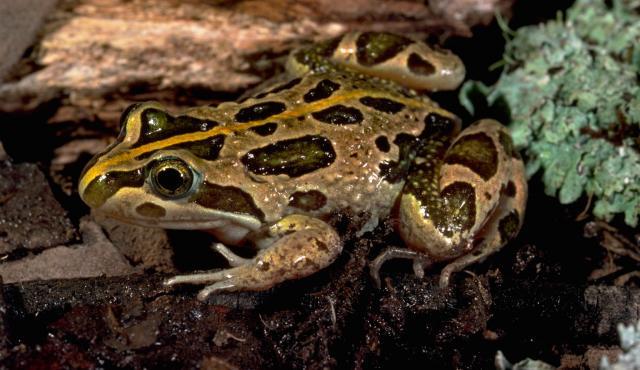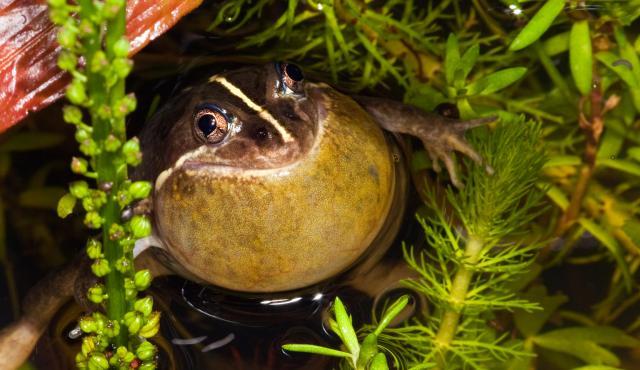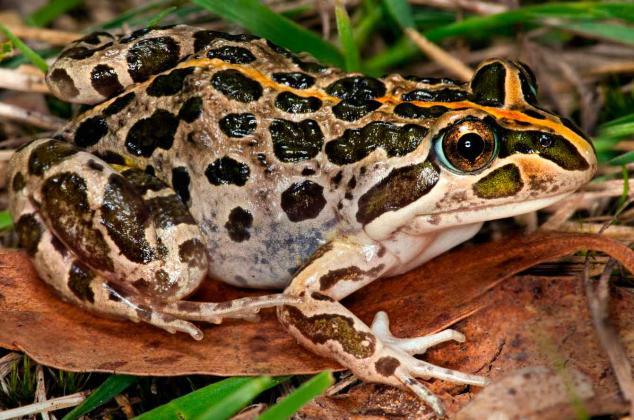



Spotted Marsh Frog
Limnodynastes tasmaniensis (southern call race)
| Details | |
|---|---|
| Type | Amphibian |
| Group | |
| Other Common Names | Spotted Grass Frog |
| Biology | Breeding season: autumn, spring-summer. Females lay 80-1500 pigmented eggs within a floating foam mass. |
| Distinctive Markings | Adults generally have a smooth pale grey-brown dorsal surface with large olive green spots, and a yellow, red or orange mid-dorsal stripe. Moderately pointed snout and indistinct tympanum. |
| Taxonomy | |
|---|---|
| Phylum | Chordata |
| Class | Amphibia |
| Order | Anura |
| Family | Limnodynastidae |
| Genus | Limnodynastes |
| Species | tasmaniensis |
Source: Atlas of Living Australia
Will breed all year except during cold winter months. Tadpoles are varied in colour.
| Interesting Facts | |
|---|---|
| Diet | Carnivore. Insects including beetles, moths, cicadas and caterpillars, also spiders and other invertebrates. |
| Habitat | Wet areas, flood plains and semi-permanent water in open forests, woodlands, shrublands and grasslands. Common in farm dams. In dry periods finds shelter in cracks in the ground or under large rocks. |
| Native Status | Native to Australia |